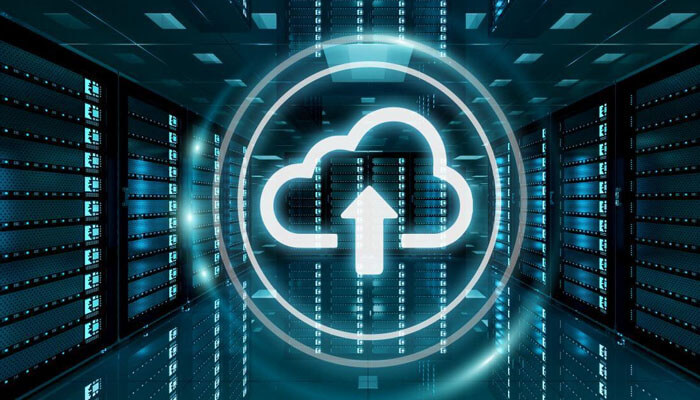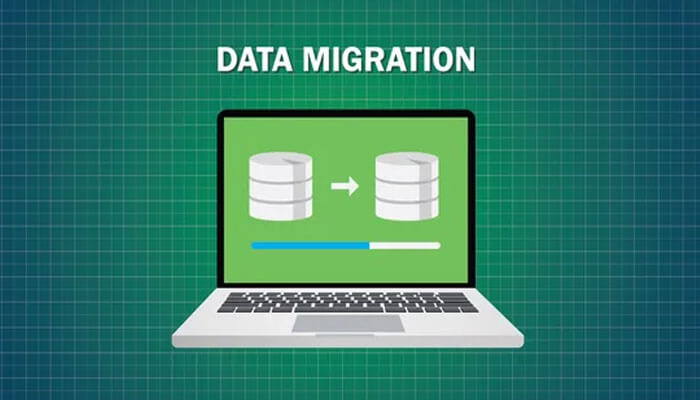Cloud systems provide numerous benefits in terms of cost, data accessibility, disaster recovery, security and flexibility. These benefits are compelling enough for companies to move their data into the cloud. However, moving data to the cloud or to another on-premise system, i.e. data migration is not as easy as it sounds – there are challenges – which, of course, you can mitigate with the right data migration services, planning and strategies.
In this article, we will discuss in brief the common challenges during database migration.
What is database migration?
Most companies are moving towards migrating their on-premise or legacy data into another advanced system or most likely, a cloud system. This process of transfer of data is called data migration. The data migration technique depends on the type or workload, amount of data, and the time you have for moving the data. Also, most cloud providers provide two types of database migration services – offline transfer and online transfer.
Why database migration is important when your organization grows
As your organization grows and reaches more users, the amount of data you collect and store increases too. Database migration is important because:
1. As the amount and type of data keeps increasing, storing and maintaining such humongous data will become hard. Also, if you have your data scattered in various silos or warehouses, it is important to consolidate the data at some point to be able to manage and analyze it better.
2. Your organization might want to change the database vendor, upgrade the database version or move data to the cloud, to accommodate new data and business requirements
3. You do not want to be locked to a specific vendor or platform and make your business more agile
4. Technologies that are old might not provide support, or have limited support for which you may have to bear higher cost. Further, moving data to a cloud platform will reduce storage and operational costs in the long run
Database migration also helps in better collaboration, as your organization can get a complete view of data across the departments.
15 common challenges during a database migration
While data migration is a huge process, organizations usually outsource it to experts, who take care of the pre-migration processes, data cleaning, migration best practices, strategies, type of migration, potential issues and much more. During the course of data migration, you may face the following challenges – of course, these can be mitigated with prior planning and following best practices:
1. Your applications might be using older technologies, frameworks and architecture. This might pose a challenge while transforming the application data into new systems and involve a lot of detailed preparation.
2. The data model, schema and the relationship between data entities might be old, outdated and even duplicate due to legacy data. In this case, the organization may have to revamp the data model or schema to migrate data into new systems.
3. Migration requires a good amount of planning. For example, you may have made some assumptions about the data, which need validation through a POC. You may want to transfer data in batches or individually, or partition data due to capacity limits. You’d also need to know your network requirements and constraints, if any – and choose the type of migration accordingly. Any lack of planning may become a challenge during the actual migration process.
4. In our fast, data-critical digital world, we need database migration without downtime. Downtime can occur when there are heavy operations causing more load on the server, or the new version of the database is not compatible with the older versions of the application instance (backward compatibility). Even a small downtime may cause huge revenue losses.
5. Another challenge could be to achieve data migration consistency in terms of getting complete, non-duplicate and ordered data. You must ensure that all of the data is migrated (no data loss), each part only once (no data corruption), and the changes are in the same order as they were in the source database.
6. If you have to migrate data into multiple databases, ensure that all the databases are compatible and the right data goes into the right target database. Data migration service experts can handle these types of complex scenarios with their knowledge of using the right tools and technologies.
7. It is vital to know the health and status of the source system. Whether it is a file system, VM, or database, the performance of the source system might be affected due to multiple changes, rebuilds, and other factors. Further, you must know,
-
- the right permissions to access source data,
- if the storage system has enough support for scaling out, if needed,
- if the dataset is consistent or constantly changing,
- the impact of the transfer on the storage system
8. Data migration systems might fail during the migration process, in which case we may lose any in-transit data. A good migration system should be able to persist the in-transit data and recover, identify and re-start from the last migrated data point.
9. Choosing the right and reliable tools might pose a challenge depending on the type of migration your business demands. You may need to run a proof of concept before actually using any tools and technologies for full data migration.
10. Your organization might need different types of data migration, for example, migrating to a new version of database, or to a better storage system with more capacity, or an entire data center, cloud, application or business process migration. Each type of migration might require a different strategy – whether all at once (big bang), or phased (trickle) needs to be carefully chalked out and verified.
11. Determining the type of data transfer is crucial to a successful data migration process. For example, if you cannot afford any downtime, you should go for a phased migration, whereas data that is not too critical can be transferred at once- a less costly and less complex approach. The key is to decide how the data can be classified as critical and non-critical. For critical data, it is crucial to verify the data transfer to detect any data corruption.
12. Preserving the metadata is one of the ways to protect data, particularly during recovery. It also helps determine the permissions, ownership, and many other file attributes. A good data migration service should not omit or alter metadata information during the migration and have mappings for the metadata.
13. Data migration is usually not a one man’s job. It requires knowledge of various platforms and technologies, which might pose a challenge, particularly for huge and varied datasets. Hire data migration experts who can handle the migration pitfalls, and foresee migration errors to a large extent.
14. If you have data from multiple sources, cleaning, transforming and consolidating data before migration to remove duplicate, outdated data could be a challenge unless you meticulously plan for it.
15. It is important to set a performance and production baseline. For example, if a query takes about 3ms on your previous system (before migration), that should be your baseline to set a benchmark for the new system. Before migration, you should have the performance audit in hand, so that you can know the actual benefits of migration.
Conclusion
We have discussed the most common challenges you may face during data migration. To mitigate the risks and challenges involved during data migration, take enough time to plan the migration, define the scope of the migration, finalize the budget, keep the backup data until all the use cases work properly, follow best practices, and most importantly, connect with data migration experts, who can take care of the entire migration process, so your organization can focus on the business development.



